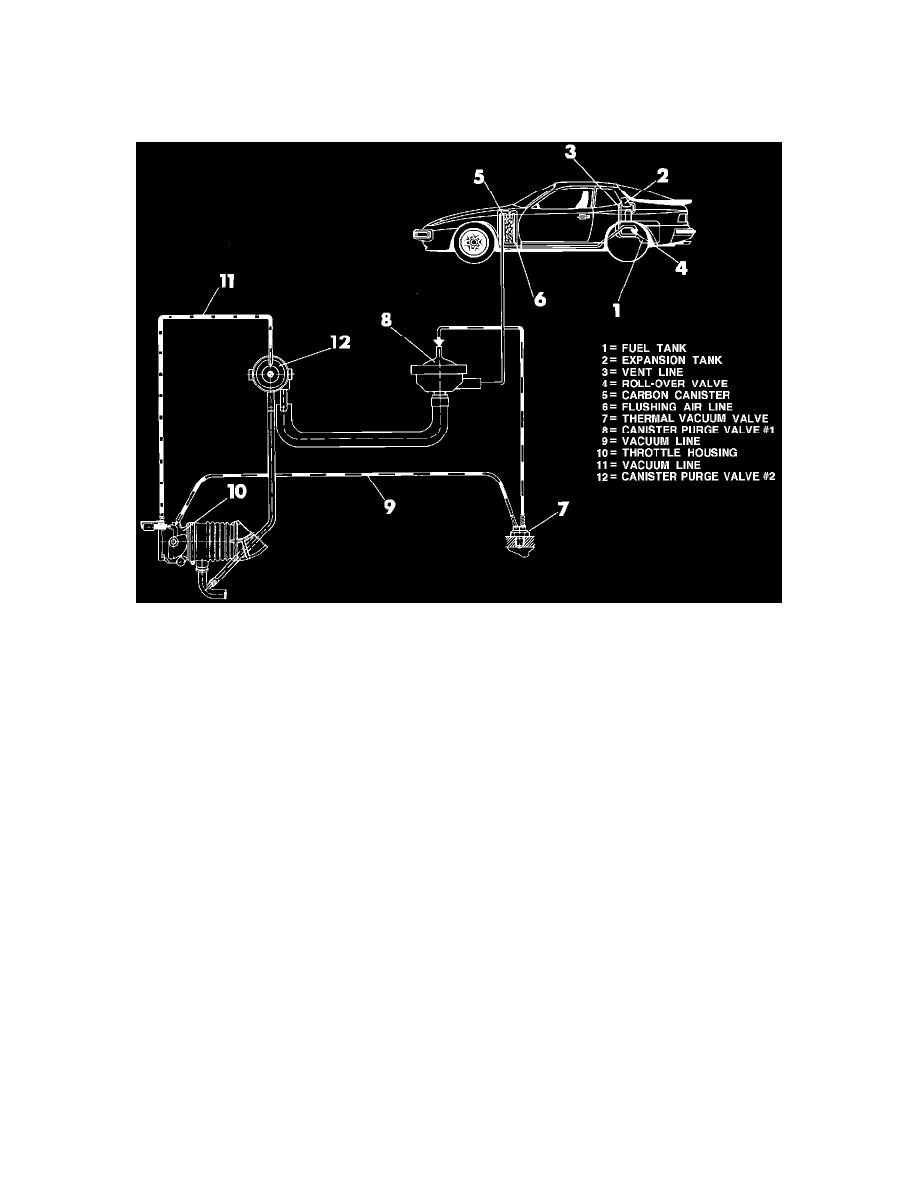944 L4-2681cc 2.7L (1989)

Evaporative Emissions System: Description and Operation
The evaporative control system prevents gasoline vapors from escaping into the atmosphere. Vapors from the gas tank are routed to the evaporative
control canister. Carbon in the canister stores the gasoline vapors until the engine is started. The intake manifold vacuum of the running engine draws the
vapors trough the two diaphragm valves into the combustion chamber, where the vapors are burned.
Evaporative Control System
The evaporative control system consists of an expansion tank, roll-over valve, carbon canister, thermostat valve, diaphragm valve #1, diaphragm valve
#2, connecting hoses and the fuel filler cap, Fig. 36.
When the engine is off, the fuel vapors collect in the carbon canister where they are absorbed by the carbon.
When the engine is running, the fuel vapors must be removed from the tank and carbon canister. This is done by opening the connection between the
carbon canister and the intake manifold, so the vapors can be drawn into the combustion chamber.
Diaphragm valve #1 can only operate when the thermostat valve opens the vacuum hose connection to the throttle housing. The thermostat valve opens
when the engine temperature has reached 58° C (136° F). When throttle housing vacuum is applied to diaphragm valve #1, the connection between the
carbon canister and diaphragm valve #2 opens.
Diaphragm valve #2 opens when throttle housing vacuum is applied (usually under normal and high engine loads). This opens the connection between
diaphragm valve #1 and the intake manifold. When both diaphragm valve #1 and #2 are open, the fuel vapors are drawn through the intake manifold to
the combustion chamber where they get ignited and burned.
COMPONENTS:
EXPANSION TANK
The expansion tank is used as a gas overflow canister.
When the gas tank is full and the outside temperature changes from cold to hot (or other influencing factors), the fuel expands into the expansion tank.
As the fuel level drops, the gas flows back into the tank via a hose connection.
ROLL-OVER VALVE
A roll-over valve is installed between the expansion tank and the carbon canister. It operates through mechanical motion.
The valve is a safety devise that stops liquid fuel from leaking into the carbon canister when the vehicle is at an angle. At a specific angle, for example,
roll-over of vehicle, accident, parked on steep hill etc, the valve closes and the liquid fuel can not exit the tank system.
CARBON CANISTER
The canister contains carbon (activated charcoal) which absorbs the gasoline vapors from the fuel tank. The suction created by the intake air system
draws the fuel vapors from the carbon out of the canister. The use of alcohol-gasoline fuels will reduce the effectiveness of the carbon in the canister.
